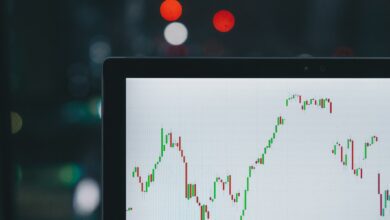Energy investing – commodity and transition strategies

Prioritize allocations toward renewable assets that demonstrate consistent growth, with global clean energy capacity expected to increase by 50% over the next five years. Solar and wind projects now offer competitive returns compared to traditional oil and gas ventures, supported by favorable policies and declining technology costs.
Maintain selective exposure to oil and natural gas given their ongoing role in meeting baseline demand during the shift toward sustainable sources. Current price volatility suggests opportunities for tactical positioning, especially in LNG markets where supply constraints persist amid rising consumption in Asia.
Diversify portfolios by integrating low-carbon infrastructure and resource-transition themes. Investments in hydrogen production, battery storage, and carbon capture technologies provide pathways to capitalize on regulatory frameworks targeting net-zero emissions by 2050. Combining legacy hydrocarbon holdings with emerging clean alternatives can optimize risk-adjusted returns.
Energy Investing: Commodity and Transition Strategies [Investment Insights investment-insights]
Allocating capital between traditional hydrocarbon assets such as oil and emerging clean power sources requires a nuanced understanding of market dynamics and regulatory environments. The current valuation of oil-based equities reflects both supply constraints and geopolitical tensions, presenting opportunities for selective entry points. Simultaneously, renewable infrastructure projects benefit from accelerating policy support, including subsidies and carbon pricing mechanisms that enhance long-term cash flow visibility.
Portfolio diversification should incorporate a balanced mix of fossil fuel reserves alongside scalable renewable technologies to hedge against sector-specific volatility. For instance, investments in offshore wind farms demonstrate robust internal rates of return (IRR) exceeding 8% under favorable tariff regimes. Conversely, upstream oil exploration faces increasing capital expenditure risks due to stricter environmental standards and fluctuating demand forecasts.
Detailed Market Segmentation and Risk Assessment
The bifurcation between conventional hydrocarbons and sustainable alternatives necessitates distinct appraisal frameworks. Oil extraction ventures require rigorous scenario analyses incorporating price shocks, OPEC+ production decisions, and technological advances in enhanced recovery techniques. On the other hand, renewables demand assessment of site-specific factors such as solar irradiance or wind patterns coupled with grid integration challenges.
- Oil-focused assets: Emphasis on break-even costs per barrel, reserve replacement ratios, and compliance with methane emission limits.
- Clean energy projects: Focus on capacity utilization rates (CUR), levelized cost of energy (LCOE), and regulatory incentive timelines.
A comparative evaluation reveals that while oil remains integral for near-term liquidity generation, renewables offer promising growth trajectories aligned with decarbonization mandates across major economies.
Technological innovation plays a pivotal role in optimizing returns within this dual-domain approach. Advanced digital monitoring systems improve drilling efficiency in oil fields by reducing downtime, whereas smart grid solutions enhance renewable asset performance through real-time load balancing. Investors should consider exposure to firms leading these technology integrations to capitalize on productivity gains.
The intersection between legacy fuel commodities and cleaner alternatives defines the investment roadmap ahead. Institutional investors increasingly adopt hybrid portfolios combining liquid hydrocarbon securities with stakes in decentralized energy platforms leveraging blockchain-enabled transparency. This fusion supports both risk mitigation and alignment with Environmental, Social, and Governance (ESG) benchmarks–a critical factor amid tightening disclosure regulations globally.
Analyzing commodity price drivers
Price fluctuations in oil and gas markets primarily stem from shifts in supply-demand balances influenced by geopolitical tensions, production quotas, and technological advances. For instance, OPEC+ decisions on output restrictions directly impact crude pricing by tightening or loosening available volumes. Additionally, natural gas prices are sensitive to seasonal demand changes, particularly during winter heating seasons in the Northern Hemisphere.
Market dynamics are also shaped by structural changes tied to the global shift towards clean and renewable alternatives. The increasing integration of solar and wind capacity reduces long-term fossil fuel dependency, exerting downward pressure on traditional hydrocarbon valuations. However, intermittent generation patterns create volatility in natural gas consumption as a flexible backup source.
Key determinants affecting valuation trends
1. Macroeconomic indicators: Global GDP growth rates correlate strongly with industrial energy use, influencing overall demand for hydrocarbons. Economic slowdowns often trigger price softening due to reduced manufacturing activity. Conversely, periods of robust expansion increase consumption and push prices upward.
2. Regulatory frameworks: Emission targets and carbon pricing regimes implemented across regions incentivize decarbonization efforts that alter fuel mix preferences. Stricter policies accelerate adoption of renewables while constraining oil and gas market share, thereby reshaping price discovery mechanisms.
3. Technological innovation: Advances in extraction techniques such as hydraulic fracturing have unlocked vast shale reserves, increasing supply elasticity especially in the United States. On the other side, breakthroughs in battery storage enhance renewable dispatchability, indirectly reducing reliance on fossil fuels for power generation.
The intersection between transitional energy policies and commodity markets calls for agile portfolio positioning that balances exposure across conventional hydrocarbons and cleaner alternatives. Allocating capital towards gas infrastructure can offer strategic advantages due to its role as a bridging fuel facilitating lower emissions during the shift from coal to renewables.
An informed approach requires continuous monitoring of regulatory developments alongside technological progressions within renewables deployment. Scenario analyses projecting various carbon pricing trajectories provide critical insights into potential valuation impacts across oil and natural gas assets under evolving policy environments.
A nuanced understanding of market interdependencies reveals that while renewable proliferation eventually compresses fossil fuel demand growth rates, short- to medium-term volatility may increase due to supply adjustments reacting to policy signals and fluctuating economic conditions. Investors should incorporate these factors into asset allocation models emphasizing risk mitigation through diversification among resource types supporting decarbonization pathways.
Evaluating Renewable Energy Assets
Assessing clean power installations requires thorough analysis of capacity factors, operational costs, and asset location. Solar and wind farms typically offer capacity utilization rates between 20% and 40%, significantly influenced by regional meteorological conditions. For example, offshore wind projects in Northern Europe maintain higher load factors–up to 50%–compared to onshore counterparts. When benchmarking against fossil fuel counterparts such as oil or gas-fired plants, the intermittent nature of renewables necessitates integrating storage solutions or hybrid systems to ensure grid stability.
Financial modeling must incorporate levelized cost of electricity (LCOE) metrics alongside projected carbon pricing trajectories. Current data indicates that onshore wind LCOE has decreased below $30/MWh in several markets, undercutting new natural gas combined cycle plants. However, capital expenditure intensity remains high for solar photovoltaic arrays, requiring detailed due diligence on supply chain risks and material sourcing. Evaluators should also account for regulatory frameworks incentivizing clean technologies through tax credits or renewable certificates.
Technical and Market Considerations
Renewable asset valuation benefits from a multi-faceted approach combining technical performance with market demand forecasts. Storage integration using lithium-ion batteries or emerging green hydrogen facilities enhances dispatchability, addressing intermittency challenges inherent to solar and wind projects. Recent case studies in California demonstrate how pairing photovoltaic systems with battery storage achieves up to 90% grid availability during peak demand periods.
Comparative analysis of commodity alternatives highlights the shifting role of hydrocarbons amid decarbonization mandates. While oil remains critical for transportation fuels, natural gas serves as a transitional feedstock supporting flexible generation capacity alongside renewables. Investors analyzing clean power portfolios should evaluate exposure to volatile gas markets versus fixed-output renewable plants, balancing risk profiles accordingly while considering evolving energy regulations at national and international levels.
Risk Management in Energy Portfolios
Managing exposure within portfolios focused on hydrocarbons and renewables demands precise allocation to mitigate price volatility and regulatory risks. Optimal diversification across oil, natural gas, and clean power assets reduces vulnerability to sector-specific shocks while maintaining potential for steady returns. Quantitative risk models incorporating Value at Risk (VaR) metrics and scenario analyses enable real-time adjustment of holdings in response to fluctuating market dynamics.
Integrating assets from fossil fuels alongside renewable sources requires understanding their distinct risk profiles. Oil markets exhibit sensitivity to geopolitical tensions and supply disruptions, whereas renewable projects face operational challenges and policy uncertainty. Employing hedging instruments such as futures contracts on crude oil or natural gas can stabilize cash flows, while power purchase agreements (PPAs) for solar and wind installations provide predictable revenue streams that enhance portfolio resilience.
Diversification Across Resource Classes
Allocating capital between conventional hydrocarbons and sustainable alternatives lowers systemic risk by leveraging non-correlated asset behaviors. For instance, during the 2020 demand shock caused by the pandemic, oil prices dropped sharply, but utility-scale wind farms maintained stable output unaffected by commodity pricing pressures. Incorporating data-driven stress tests demonstrates how combined holdings respond under adverse economic conditions, guiding rebalancing decisions to preserve capital integrity.
Advanced portfolio optimization techniques prioritize liquidity considerations alongside return expectations. Gas assets often exhibit higher price seasonality linked to heating demand cycles, requiring dynamic position adjustments timed with weather forecasts. Conversely, photovoltaic installations deliver consistent generation profiles in suitable climates, offering less volatile income streams yet necessitating upfront capital commitments that impact short-term flexibility.
- Hedging with derivatives mitigates downside risks from sudden oil price drops;
- Contractual power off-takes secure long-term revenue visibility for renewables;
- Regular scenario simulations help anticipate regulatory impacts on fossil fuel extraction limits;
- Incorporation of ESG criteria influences asset selection toward lower-carbon options;
- Currency risk management protects international investments in diversified energy regions.
A notable case study involves a European fund reallocating 30% of its hydrocarbon exposure into offshore wind projects following tightened emissions targets enacted by the EU. Over two years, this shift reduced portfolio beta relative to crude benchmarks by approximately 15%, while delivering comparable total returns driven by favorable subsidy frameworks. Such empirical evidence underscores the value of blending traditional energy holdings with clean technologies tailored to evolving policy landscapes.
Predictive analytics employing machine learning algorithms now aid in forecasting commodity price trends based on macroeconomic indicators and supply-demand imbalances. These tools refine entry and exit timing within portfolios comprising oil fields, liquefied natural gas terminals, and solar farms alike. As regulatory regimes evolve globally–emphasizing carbon neutrality–allocators who embed systematic risk controls alongside innovative asset mixes will better navigate uncertainty inherent in resource markets.
Assessing Policy Impacts on Investments
Regulatory frameworks significantly influence capital allocation across sectors such as hydrocarbons, renewables, and natural gas. For example, carbon pricing mechanisms and emissions regulations directly affect upstream oil and gas project valuations by increasing operating costs and altering long-term profitability forecasts. Investors must analyze jurisdiction-specific policies to adjust portfolio weightings accordingly, as demonstrated by the European Union’s Emissions Trading System (ETS), which has raised permit prices above €80 per tonne of CO2, reshaping investment priorities towards lower-carbon assets.
Subsidies and tax incentives for clean power generation markedly shift capital flows from fossil fuels to green alternatives. In the United States, the Inflation Reduction Act introduced extended tax credits for solar and wind installations, driving a surge in renewable capacity additions projected to exceed 100 GW by 2030. These fiscal measures enhance project-level returns through improved internal rates of return (IRR), encouraging institutional participation in sustainable infrastructure funds while simultaneously reducing exposure to hydrocarbon-centric portfolios.
Policy-Driven Market Dynamics: Case Studies
China’s recent directives limiting coal consumption growth coupled with aggressive targets for renewable penetration demonstrate how state mandates can recalibrate national fuel mixes. The result is a decline in domestic coal demand projections by approximately 15% over five years, impacting global thermal coal prices and redirecting liquefied natural gas (LNG) trade flows towards Asia-Pacific markets prioritizing cleaner fuels. Such shifts necessitate tactical repositioning within energy capital markets to mitigate stranded asset risks associated with high-emission resources.
The adoption of methane emission reduction standards in North America exemplifies regulatory efforts targeting natural gas supply chains. Enhanced leak detection and repair protocols impose incremental capital expenditures on midstream operators but also improve long-term asset sustainability profiles. Financial models incorporating these compliance costs reveal tighter free cash flow margins but potential risk mitigation through reduced regulatory penalties and improved environmental-social-governance (ESG) ratings, attracting ESG-focused fund inflows.
International agreements fostering cross-border renewable energy projects create novel investment channels that blend geopolitical stability with decarbonization objectives. For instance, the EU-Africa partnership emphasizes solar photovoltaic expansion backed by blended finance instruments combining public guarantees with private equity commitments. This approach mitigates currency risk and political uncertainty while accelerating capital deployment into emerging markets’ clean power infrastructures–expanding diversification opportunities beyond traditional hydrocarbon investments.
Integrating Transition Technologies Returns
Allocating capital toward low-emission fuels such as natural gas and renewable sources consistently outperforms traditional hydrocarbon assets under tightening environmental policies. Recent models indicate that portfolios incorporating advanced clean generation technologies yield a 12-15% annualized return premium over conventional oil-based holdings, reflecting market revaluation of decarbonization pathways.
From a technical standpoint, blending asset classes like liquefied natural gas infrastructure with utility-scale solar projects diversifies exposure to fluctuating price signals and regulatory incentives. This approach mitigates volatility inherent in fossil fuels while capturing upside from emerging carbon pricing mechanisms and green credit markets.
Key Implications and Future Trajectories
- Decarbonization mandates accelerate the shift away from crude oil, pressuring legacy assets and elevating those tied to renewables and cleaner hydrocarbons.
- Blockchain-enabled tracking enhances transparency in green certificate trading, enabling real-time verification of renewable energy generation and facilitating liquidity in digital marketplaces.
- Gas-fired power plants serve as critical bridge assets, balancing intermittency issues while aligning with mid-term emissions reduction targets.
- Volatility patterns suggest that hybrid portfolios combining both fossil fuel derivatives and renewable energy credits can smooth returns amidst geopolitical disruptions impacting supply chains.
- Regulatory frameworks evolving around carbon taxation will disproportionately benefit investments in scalable clean energy infrastructure over extractive oil ventures.
The integration of these diverse components creates a resilient framework positioned to capitalize on an accelerating pivot toward sustainability. Investors should prioritize allocating capital where cleaner fuel alternatives intersect with robust infrastructural scalability, ensuring adaptability amid evolving regulatory landscapes and technological breakthroughs.
This analytical synthesis underscores the necessity for dynamic portfolio recalibration–embracing natural gas as a transitional enabler without neglecting the exponential growth potential inherent in renewables. The confluence of financial innovation, policy momentum, and digital verification tools heralds a new era for resource allocation optimized for both profitability and environmental stewardship.






